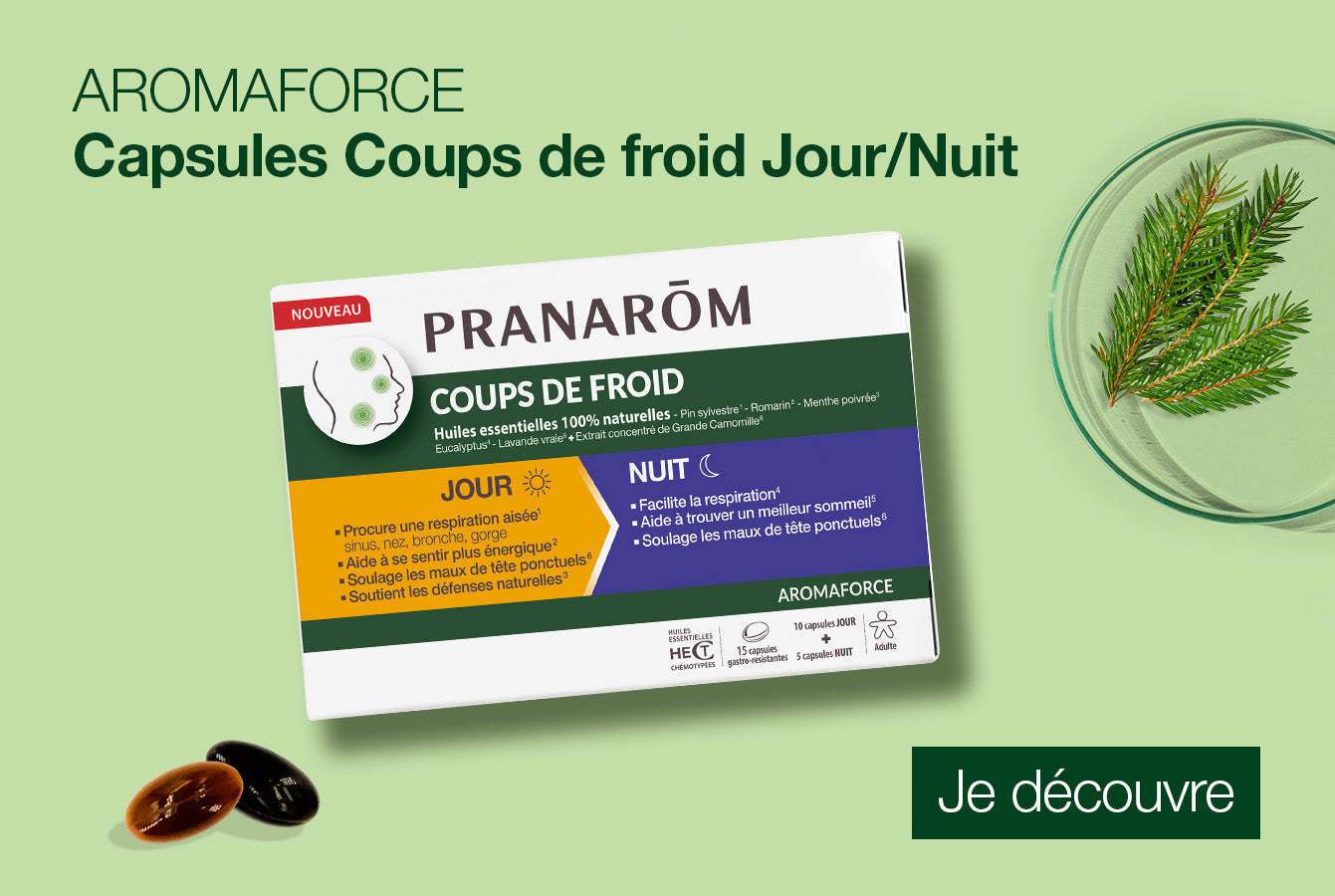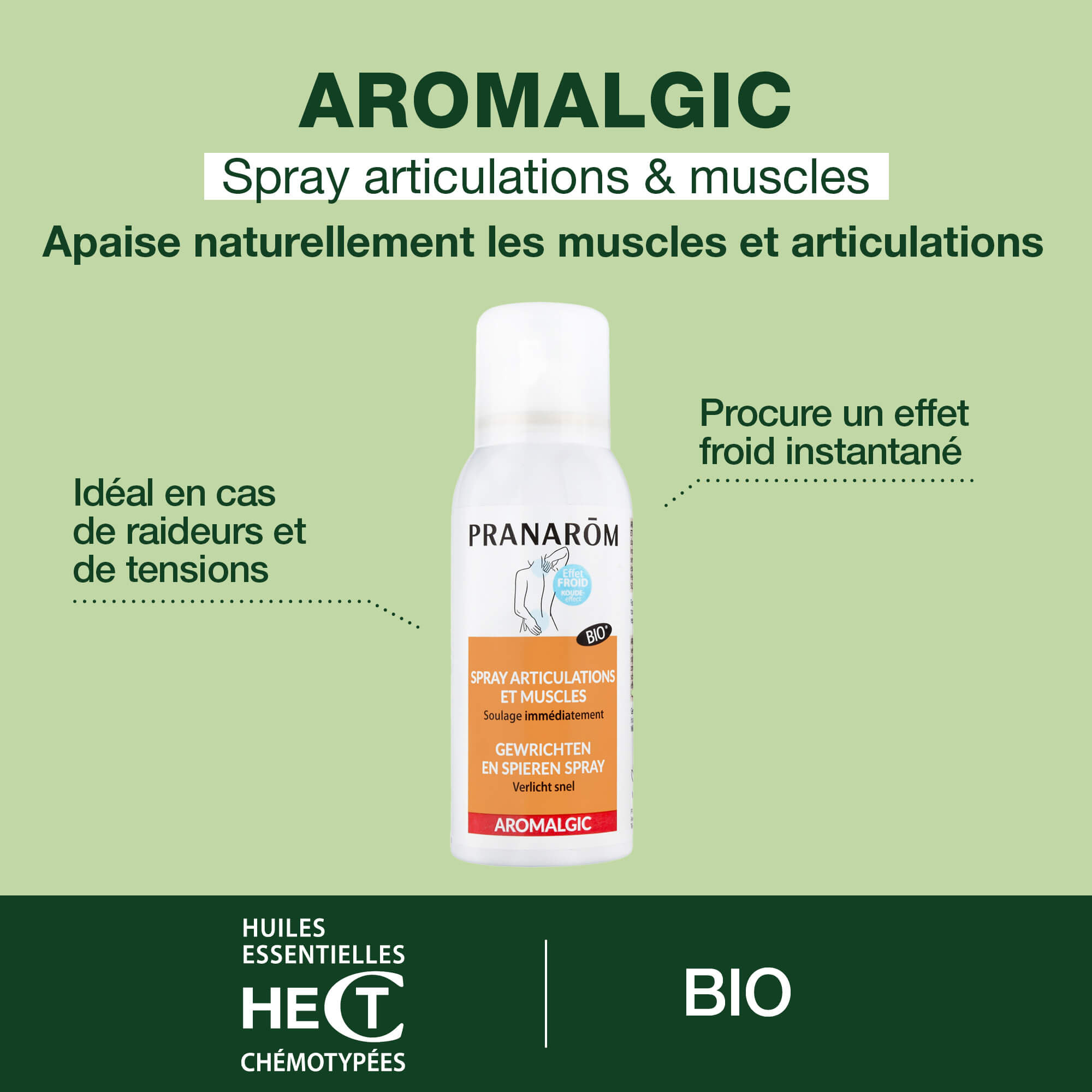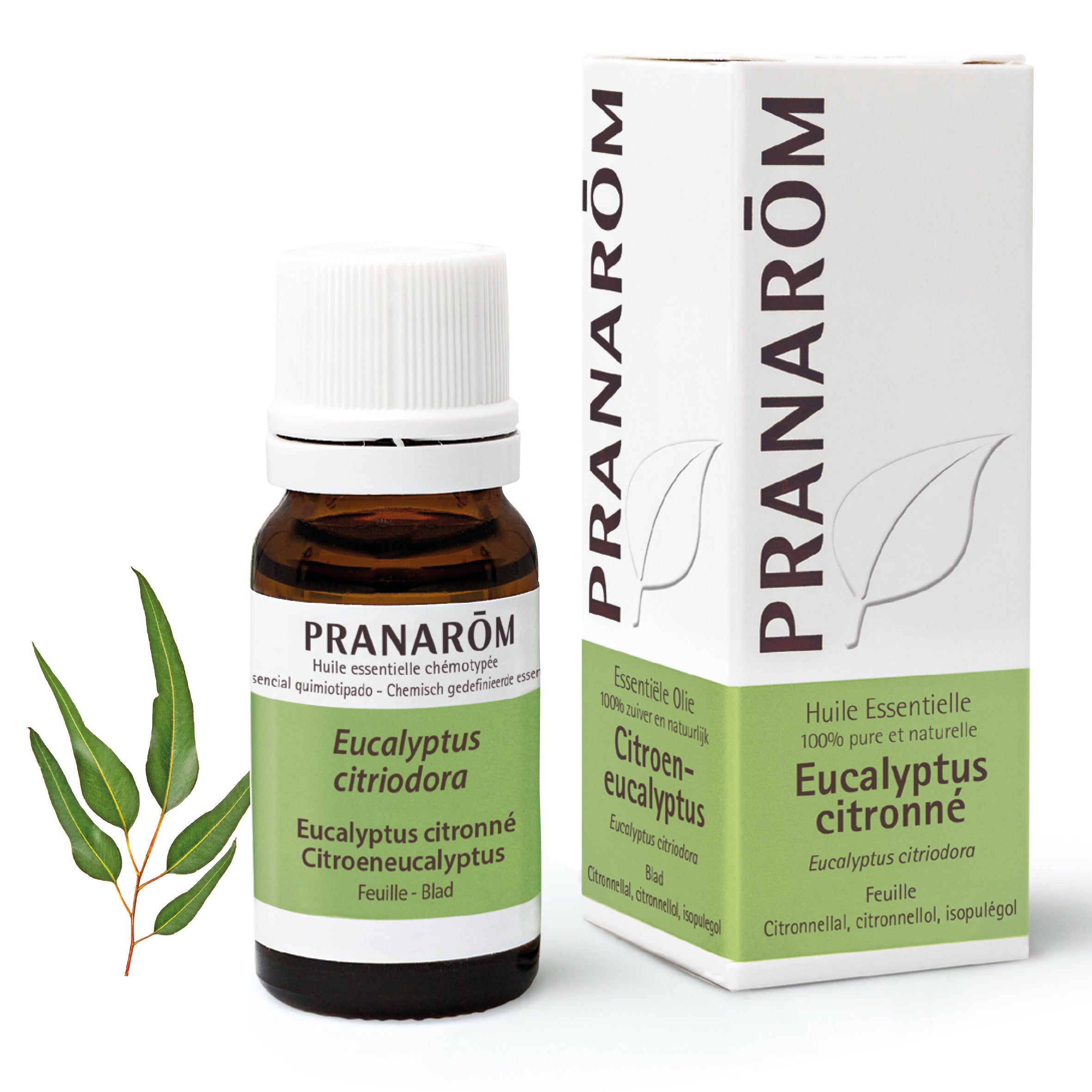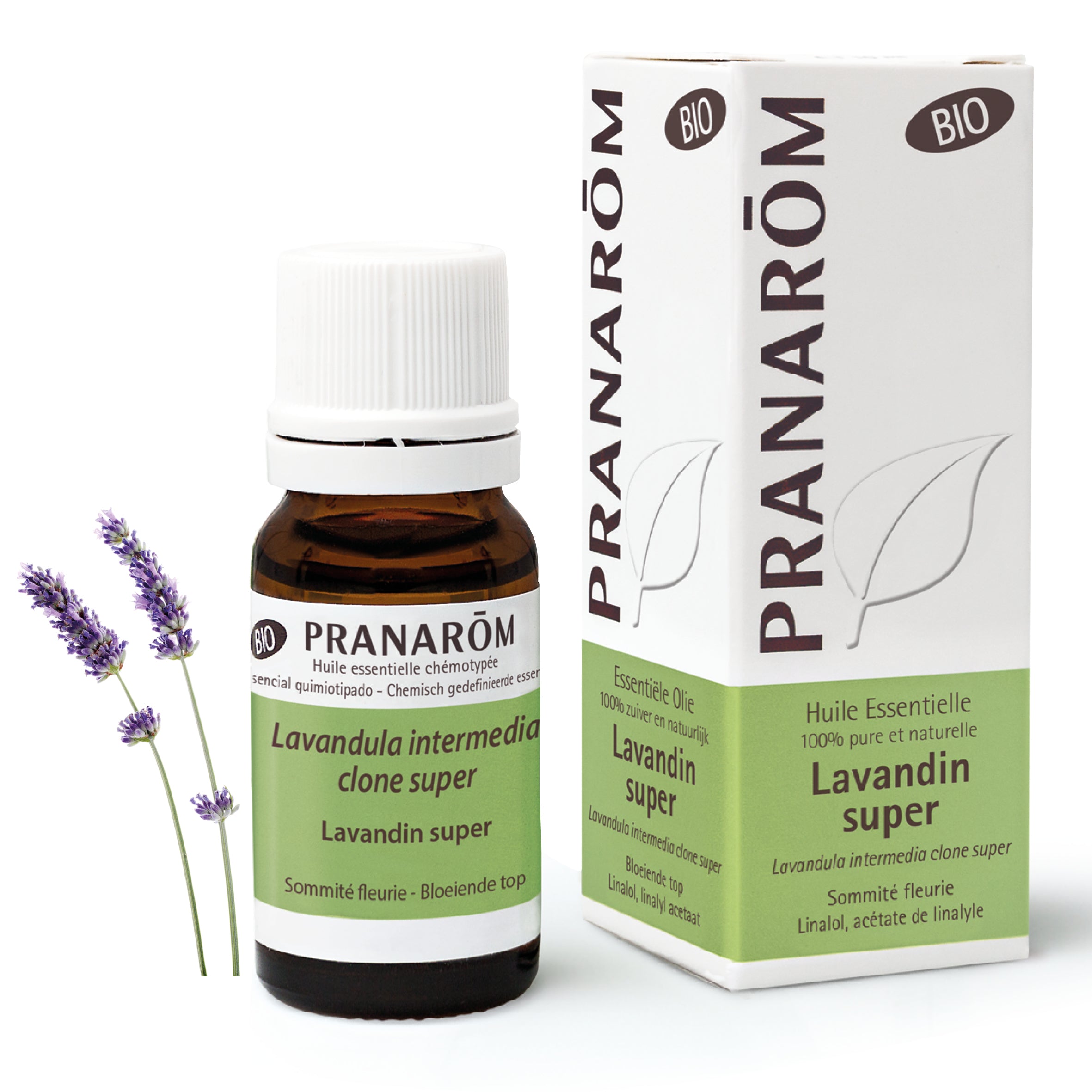Back to school has passed and many of us have returned to physical activity with great pleasure. Sport is excellent for your health but it is not always done without harm! Warming up is essential in most cases, and especially if you are preparing for intense efforts or if you have stopped physical activity for a long time... Certain Essential Oils can help us prepare the muscles and joints under stress. This is what the AROMALGIC spray offers us.
Aromalgic Spray, concentrated formula! Pranarôm offers you a very effective and practical spray based on Essential Oils. The Aromalgic range also exists in the form of massage oil, ideal after exercise or as a basic treatment for painful joints.
The AROMALGIC spray uses the best Essential Oils for the joint, tendon and muscular sphere. The following Essential Oils are found in the AROMALGIC spray formula:
- the essential wintergreen (gaultheria procumbens) : an Essential Oil known for its anti-inflammatory and analgesic action;
- Wild Mint (mentha arvensis) : a fresh mint with an ice cube effect for an analgesic action;
- Lemon Eucalyptus (eucalyptus citriodora) : the “firefighter” Essential Oil which soothes the fire of inflammation;
- lemon litsea (litsea citrata): for relaxation, flexibility and warm-up before exercise;
- Lavandin (lavandula burnatii or grosso) : We sometimes forget it but lavandin is also known to be a good analgesic;
- Scots Pine (pinus sylvestris) : A most invigorating Essential Oil to prepare the body for exercise;
- Chinese cinnamon (cinnamomum cassia) : Well dosed, cinnamon is one of the most invigorating and warming essences;
- Katrafay (Cedrelopsis grevei) : the star which comes from Madagascar and lavishes us with its benefits. An Essential Oil ideal for calming inflammation and softening tissues.
The AROMALGIC spray can be used in all directions (even upside down to reach the back of the limbs).
In case of muscle and/or joint discomfort, spray 2 to 3 times a day on the affected body area. For warming up before physical activity: spray locally.





















